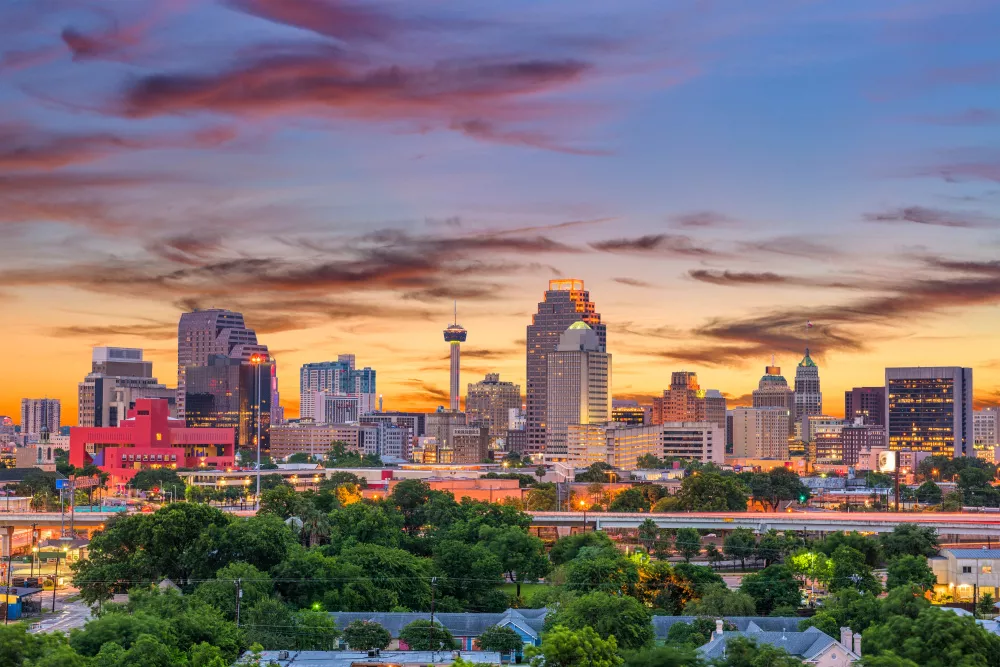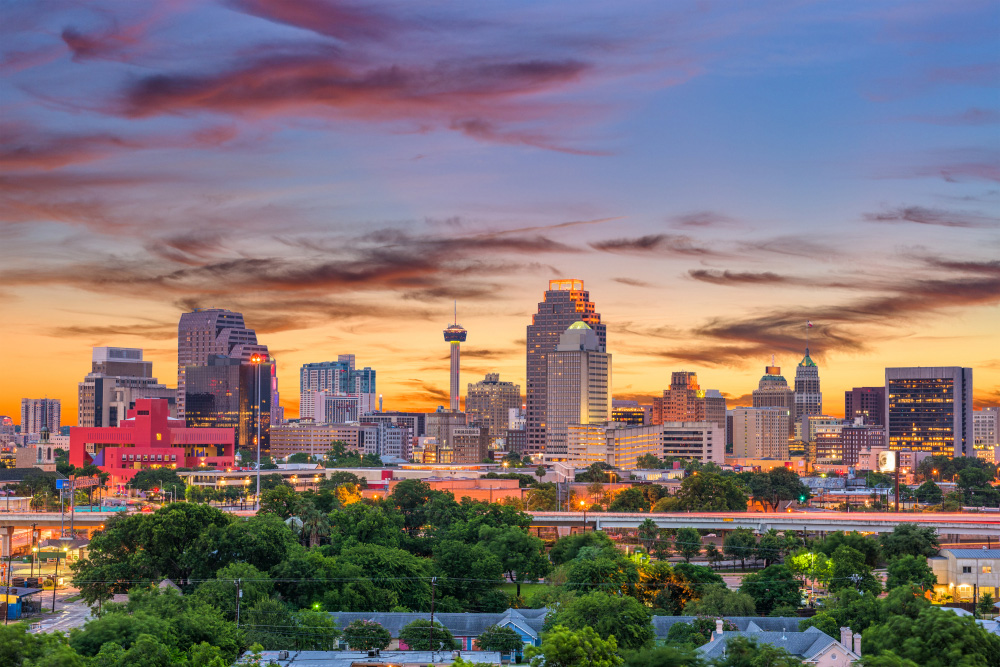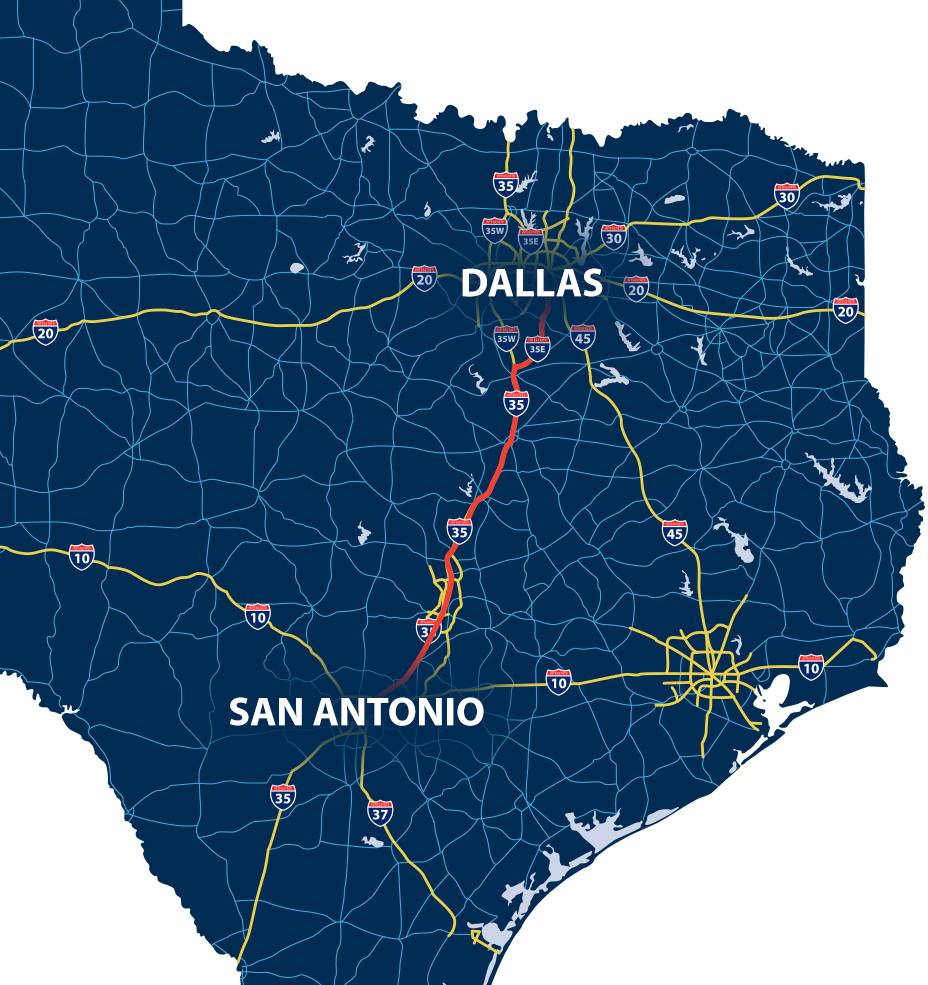Moving From San Antonio To Saint Louis
Are you considering relocating from San Antonio to Saint Louis? This transition can be both exciting and intimidating, especially when it comes to navigating the unique characteristics of each city. San Antonio, known for its vibrant cultural scene and warm Texan hospitality, is a far cry from Saint Louis, a city steeped in Midwestern charm and rich history. As you prepare to make the move, it's essential to understand the differences in cost of living, job markets, and lifestyle between these two distinct cities. In this article, we'll provide you with the insider knowledge you need to make a smooth transition.

Planning a Stress-Free Move from San Antonio to Saint Louis
Moving from San Antonio, Texas to Saint Louis, Missouri can be a significant change, but with proper planning, it can be a smooth and stress-free experience. Here are some key factors to consider when making this move:
Understanding the Cost of Living
One of the most significant differences between San Antonio and Saint Louis is the cost of living. Saint Louis has a lower cost of living compared to San Antonio, with a overall cost of living index score of 87.2 compared to San Antonio's 93.2. Housing costs, in particular, are much lower in Saint Louis, with the median home price being around $140,000 compared to San Antonio's $240,000. This can be a significant factor to consider when planning your move.
Job Opportunities and Economy
Saint Louis has a diverse economy with major industries in healthcare, manufacturing, and tourism. The city is home to several major companies, including Express Scripts, Enterprise Rent-A-Car, and Anheuser-Busch. The unemployment rate in Saint Louis is around 3.5%, which is lower than the national average. San Antonio, on the other hand, has a strong economy driven by the military, healthcare, and tourism industries. However, Saint Louis offers a more diverse range of job opportunities, making it an attractive option for those looking to switch careers or industries.
Climate and Weather
San Antonio and Saint Louis have distinct climates, with San Antonio experiencing hot summers and mild winters, and Saint Louis experiencing cold winters and hot summers. Saint Louis is located in a region known as Tornado Alley, and experiences an average of 37 tornadoes per year. San Antonio, on the other hand, is located in a region prone to droughts and heatwaves. It's essential to consider the climate and weather patterns when planning your move and preparing your new home.
Culture and Lifestyle
Saint Louis and San Antonio have unique cultures and lifestyles. Saint Louis is known for its vibrant arts and cultural scene, with numerous museums, galleries, and performance venues. The city is also home to the iconic Gateway Arch, a symbol of the westward expansion of the United States. San Antonio, on the other hand, is famous for its River Walk, a network of walkways along the San Antonio River lined with restaurants, bars, and shops. Both cities offer a range of outdoor recreational activities, including hiking, biking, and kayaking.
Education and Healthcare
Both San Antonio and Saint Louis have high-quality education and healthcare systems. Saint Louis is home to Washington University, one of the top private research universities in the country, as well as Saint Louis University, a Jesuit institution with a strong reputation for academic excellence. San Antonio, on the other hand, is home to the University of Texas at San Antonio, a rapidly growing public research university. Both cities have excellent healthcare systems, with multiple hospitals and medical centers, including the renowned Barnes-Jewish Hospital in Saint Louis.
| Category | San Antonio | Saint Louis |
|---|---|---|
| Cost of Living Index | 93.2 | 87.2 |
| Median Home Price | $240,000 | $140,000 |
| Unemployment Rate | 3.8% | 3.5% |
| Average Temperature (°F) | 69.1 | 54.4 |
Is St. Louis a good place to move to?

Pros of Moving to St. Louis
St. Louis is a great place to move to, offering a mix of Midwestern charm and urban amenities. One of the biggest advantages of living in St. Louis is its affordable cost of living. The city has a lower cost of living compared to other major cities in the United States, making it an attractive option for people looking to relocate. Additionally, St. Louis has a thriving cultural scene, with numerous museums, galleries, and performance venues. The city is also home to several prestigious universities and institutions, providing access to quality education and research opportunities.
- The cost of living in St. Louis is 87.2% of the national average, making it an affordable option for many people.
- The city has a rich cultural scene, with institutions like the St. Louis Art Museum, the Missouri History Museum, and the Fox Theatre.
- St. Louis is home to several top-ranked universities, including Washington University and Saint Louis University.
Things to Consider Before Moving to St. Louis
While St. Louis has many advantages, there are some things to consider before making the move. One of the biggest challenges facing the city is its high crime rate. St. Louis has consistently ranked among the top 10 most dangerous cities in the United States, with high rates of violent crime. Additionally, the city's weather can be quite unpredictable, with hot summers and cold winters. Finally, St. Louis has struggled with economic growth, which can impact job opportunities and career advancement.
- St. Louis has a high crime rate, with a violent crime rate of 758.07 per 100,000 residents.
- The city experiences a humid continental climate, with hot summers and cold winters.
- St. Louis has struggled with economic growth, with a GDP growth rate of 1.3% in 2020.
NeFamily-Friendly Activities and Neighborhoods in St. Louis
St. Louis is a great place to raise a family, with plenty of family-friendly activities and neighborhoods to choose from. One of the city's biggest attractions is the St. Louis Zoo, which is home to over 18,000 animals from around the world. The city also has several parks and outdoor spaces, including Forest Park, which is one of the largest urban parks in the United States. When it comes to neighborhoods, families may want to consider areas like Clayton, University City, and Webster Groves, which offer a mix of amenities, schools, and community spirit.
- The St. Louis Zoo is home to over 18,000 animals from around the world and offers free admission.
- Forest Park is one of the largest urban parks in the United States, covering over 1,371 acres.
- Neighborhoods like Clayton, University City, and Webster Groves offer a mix of amenities, schools, and community spirit.
Is San Antonio a good place to relocate?

San Antonio is a popular relocation destination, and for good reason. This vibrant Texas city offers a unique blend of cultural heritage, economic opportunity, and quality of life. Here are some reasons why San Antonio might be the perfect place for you to call home:
Job Opportunities and Economy
San Antonio's economy is thriving, with a low unemployment rate and a diverse range of industries. The city is home to several major employers, including the US military, healthcare and biotech companies, and tourism-related businesses. Additionally, San Antonio is a hub for startups and entrepreneurs, with a growing number of incubators and accelerators.
- Major industries: Healthcare, biotechnology, tourism, military, and cybersecurity
- Large employers: USAA, H-E-B, Methodist Healthcare System, and CPS Energy
- Startup resources: San Antonio Startup Week, Geekdom, and the UTSA Center for Innovation and Technology Entrepreneurship
Cost of Living and Housing
Compared to other major cities in the US, San Antonio has a relatively low cost of living. The median home price is around $240,000, making it an affordable option for buyers. Rentals are also reasonably priced, with the average rent for a one-bedroom apartment hovering around $1,000 per month.
- Median home price: $240,000
- Average rent for a one-bedroom apartment: $1,000 per month
- Utility costs: 10% lower than the national average
Things to Do and Culture
San Antonio is a city that's rich in culture and history, with a plethora of attractions and activities to enjoy. From the famous River Walk to the Tower of the Americas, there's always something to do. The city is also home to a vibrant arts scene, with numerous galleries and museums.
- Popular attractions: The Alamo, River Walk, and Tower of the Americas
- Cultural events: Fiesta San Antonio, San Antonio Stock Show & Rodeo, and Luminaria
- Outdoor activities: McAllister Park, Denman Estate Park, and the San Antonio Missions National Historical Park
Is San Antonio a livable city?

San Antonio is a city located in the southern part of Texas, known for its rich cultural heritage, vibrant arts scene, and thriving economy. While it may not be as well-known as other major cities in the United States, San Antonio has a lot to offer its residents. In terms of livability, San Antonio scores high in several key areas.
Cost of Living
San Antonio has a relatively low cost of living compared to other major cities in the United States. The median home price is around $240,000, which is lower than many other cities in the country. Additionally, the overall cost of living index is 87.2, which is 12.8% lower than the national average. This makes San Antonio an attractive option for people looking to relocate.
- Median home price: $240,000
- Cost of living index: 87.2
- 12.8% lower than the national average
Job Market and Economy
San Antonio has a strong and diverse economy, with major industries in healthcare, technology, and tourism. The city is home to several major employers, including the South Texas Veterans Health Care System and USAA. The unemployment rate is relatively low, at around 3.4%, and the median household income is around $53,000.
- Major industries: healthcare, technology, and tourism
- Major employers: South Texas Veterans Health Care System and USAA
- Unemployment rate: 3.4%
- Median household income: $53,000
Quality of Life
San Antonio offers a high quality of life, with a rich cultural scene, plenty of outdoor recreational activities, and a vibrant downtown area. The city is home to several world-renowned attractions, including the Alamo and the River Walk. Additionally, San Antonio has a strong sense of community, with many neighborhoods hosting festivals and events throughout the year.
- Rich cultural scene
- Plenty of outdoor recreational activities
- Vibrant downtown area
- Home to the Alamo and the River Walk
- Strong sense of community
How much does it cost to move from San Antonio to Dallas?

The cost of moving from San Antonio to Dallas can vary greatly depending on several factors, including the distance, weight, and type of items being moved, as well as the services required. On average, a local move within Texas can cost anywhere from $200 to $2,000 or more.
Factors Affecting Moving Costs
The cost of moving from San Antonio to Dallas is influenced by several factors, including:
- Distance: The farther you move, the more you'll pay. San Antonio to Dallas is approximately 270 miles, which can affect the overall cost.
- Weight and Volume: The more items you have, the heavier and bulkier the load, which can increase the cost.
- Services Required: If you need additional services like packing, loading, or storage, this can add to the overall cost.
Average Moving Costs in Texas
Here are some average moving costs in Texas to give you an idea of what to expect:
- A local move (under 50 miles): $200-$500
- A regional move (50-100 miles): $500-$1,000
- A long-distance move (100-500 miles): $1,000-$2,500
- A cross-country move (over 500 miles): $2,500-$5,000 or more
Ways to Reduce Moving Costs
To save money on your move from San Antonio to Dallas, consider the following tips:
- Pack Yourself: Packing your own items can save you money on packing services.
- Downsize: Reduce the amount of items you're moving to lower the overall weight and volume.
- Choose an Off-Peak Season: Moving during the off-season (winter) can result in lower rates.
FAQ
What are the key differences between San Antonio and Saint Louis?
When moving from San Antonio to Saint Louis, it's essential to understand the distinct characteristics of each city. Climate is a significant factor, as San Antonio has a humid subtropical climate, while Saint Louis has a humid continental climate with cold winters and hot summers. Additionally, Saint Louis has a more urban feel, with a higher population density than San Antonio. The cost of living is also lower in Saint Louis, which can be a significant advantage for those looking to relocate. Furthermore, Saint Louis has a rich historical heritage, with landmarks like the Gateway Arch, whereas San Antonio is famous for its vibrant cultural scene and the Alamo.
How do I prepare my family for the move from San Antonio to Saint Louis?
Preparing your family for a move from San Antonio to Saint Louis requires careful planning and consideration. Start early by discussing the move with your family and involving them in the decision-making process. Research schools and neighborhoods in Saint Louis to ensure a smooth transition for your children. It's also crucial to downsize and declutter your home, as you'll be adjusting to a potentially smaller living space. Make a moving checklist to stay organized, and consider hiring a reputable moving company to handle the logistics of your move.
What are some tips for finding a job in Saint Louis?
When moving to Saint Louis, finding a job can be a top priority. Networking is key, so attend job fairs and industry events to connect with potential employers. Update your resume to showcase your skills and experience, and tailor it to the Saint Louis job market. Consider job search platforms and websites specific to the region, such as the Saint Louis Business Journal or the Missouri Department of Labor. Additionally, research major employers in the area, like BJC HealthCare or Enterprise Holdings, to explore potential job opportunities.
What are some things to do in Saint Louis after the move?
After moving to Saint Louis, you'll want to explore all that the city has to offer. Visit iconic landmarks like the Gateway Arch, Forest Park, and the City Museum. Take a stroll along the Mississippi River and enjoy the city's scenic views. Saint Louis is also known for its brewery scene, with popular spots like Anheuser-Busch and Schlafly Tap Room. If you're an outdoor enthusiast, explore the many parks and trails in the area, such as Castlewood State Park or the Katy Trail. Finally, immerse yourself in the local culture by attending events like the Saint Louis Renaissance Faire or the Missouri Botanical Garden's Japanese Festival.